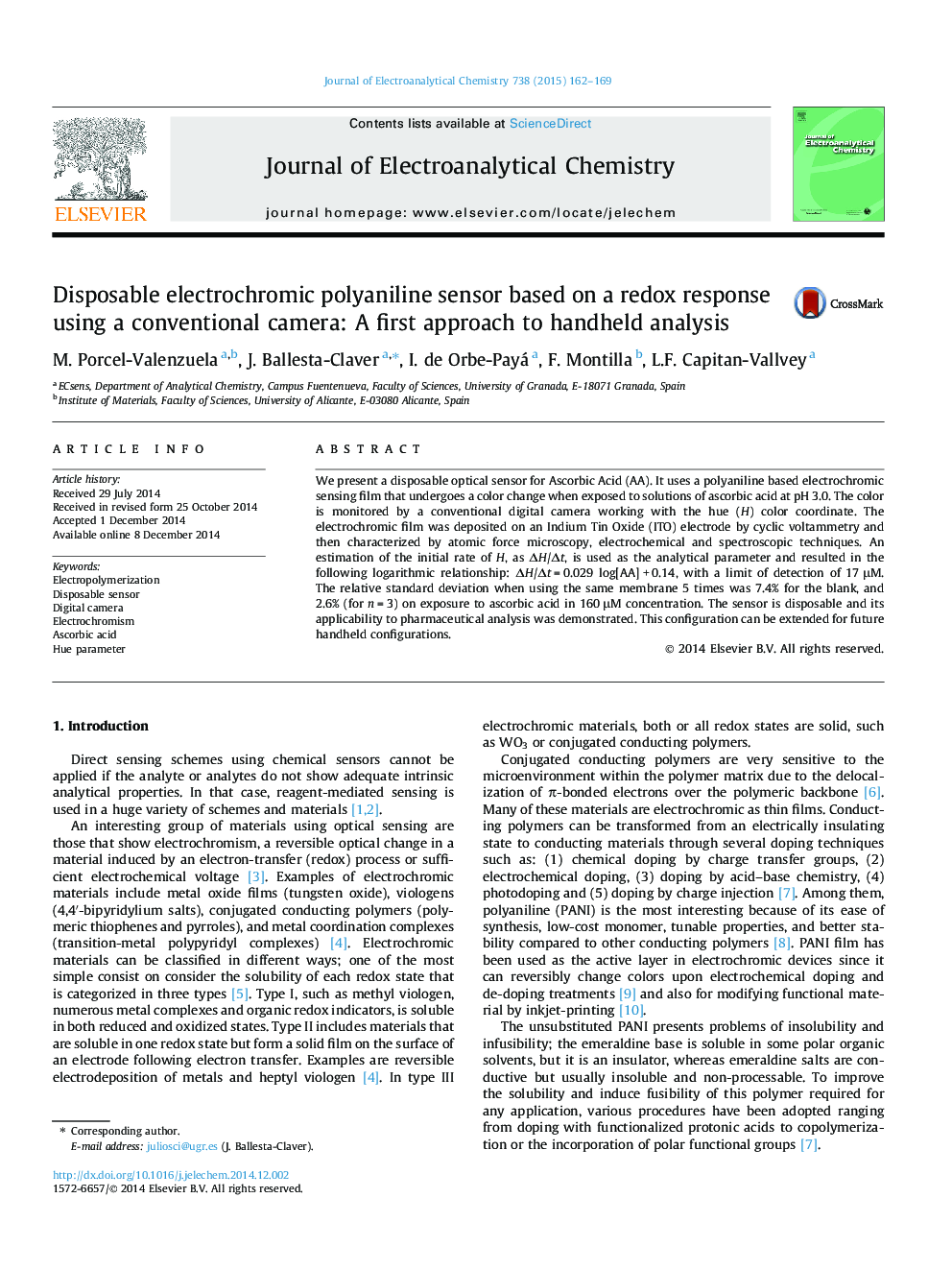| Article ID | Journal | Published Year | Pages | File Type |
|---|---|---|---|---|
| 218584 | Journal of Electroanalytical Chemistry | 2015 | 8 Pages |
•Use of electrochromic polymers for quantitative colorimetric response.•Use of a conventional digital camera as an inexpensive analytical instrumentation for analytical quantification of analytes.•Possibility of developing handheld systems for analytical quantification.•Use of HSV color space, the hue parameter, for precise detection of color change from electrochromic polymers.
We present a disposable optical sensor for Ascorbic Acid (AA). It uses a polyaniline based electrochromic sensing film that undergoes a color change when exposed to solutions of ascorbic acid at pH 3.0. The color is monitored by a conventional digital camera working with the hue (H) color coordinate. The electrochromic film was deposited on an Indium Tin Oxide (ITO) electrode by cyclic voltammetry and then characterized by atomic force microscopy, electrochemical and spectroscopic techniques. An estimation of the initial rate of H, as ΔH/Δt, is used as the analytical parameter and resulted in the following logarithmic relationship: ΔH/Δt = 0.029 log[AA] + 0.14, with a limit of detection of 17 μM. The relative standard deviation when using the same membrane 5 times was 7.4% for the blank, and 2.6% (for n = 3) on exposure to ascorbic acid in 160 μM concentration. The sensor is disposable and its applicability to pharmaceutical analysis was demonstrated. This configuration can be extended for future handheld configurations.
Graphical abstractThis article presents how to obtain precise analytical information by using a digital camera. It is only needed a disposable electrochromic optical sensor making use of a polyaniline (PANI) that can be deposited on an Indium Tin Oxide (ITO) electrode by cyclic voltammetry, which can undergoes a color change if it is exposed to different solutions of ascorbic acid of pH 3.0. Color is monitored by a conventional digital camera working with the H coordinate (hue) of HSV color space. It can be observed the electrochemical scale of PANI color change in the upper of the image, where each square corresponds to a decrease of 0.045 in voltage starting from the right. An estimation of the initial rate of hue (H), defined as ΔH/Δt, is used as the analytical information and resulted in a logarithmic relationship, with a detection limit of 17 μM. This configuration can be extended for future handheld configurations.Figure optionsDownload full-size imageDownload as PowerPoint slide
